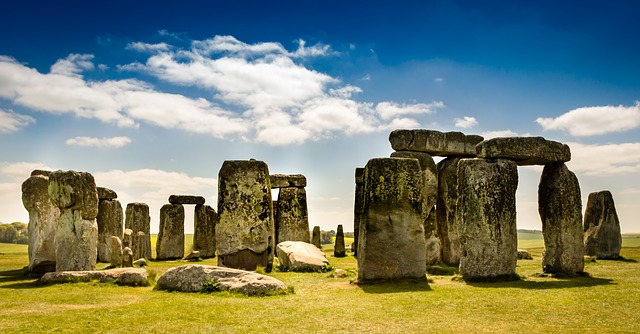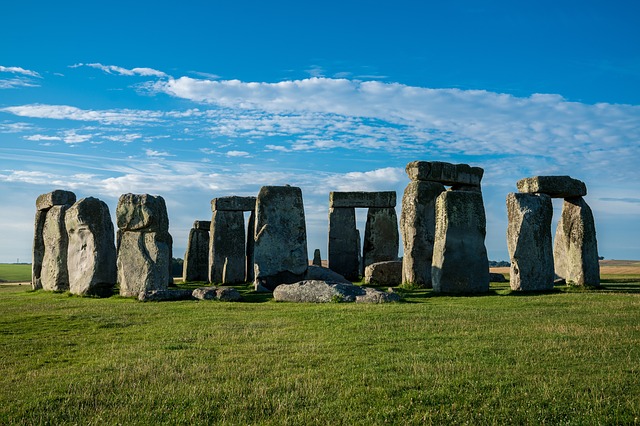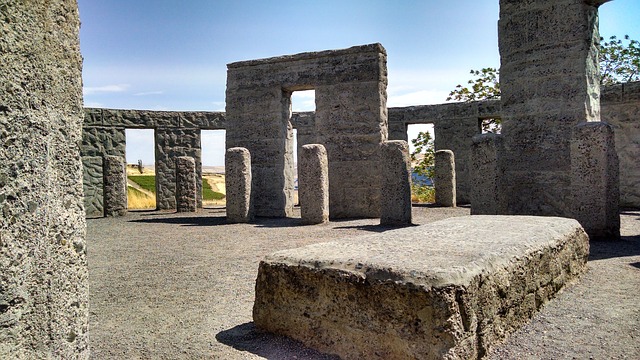
PREHISTORIC STRUCTURE
MAR 8, 2022
25 Ultimate Facts Of Stonehenge Monument

Read this 25 ultimate facts of Stonehenge monument that describes all kind of informations of the mysterious structure.
1. Stonehenge is a building that was built in the Bronze Age and Neolithic. It is located adjacent to Amesbury in Wiltshire, England, about 13 kilometers northwest of Salisbury.
2. Stonehenge was built in several phases of construction over at least 1,500 years and throughout that time the activity continued.
3. The English history page, English Heritage writes that the foundation of this site dates back to the Mesolithic period, which is 8500 years BC.
4. According to folklore, Stonehenge was created by Merlin, the wizard from the legend of Arthur, who miraculously removed the boulders from Ireland, where their giants had gathered.
5. The name Stonehenge came into use in 1610. In 1200 it was called Stanhenge, while in 1250 it was called Stonhenge. Stonheng in 1297 and The Stone Hengles in 1470.
6. The name probably comes from the Saxon “stan-hengen” meaning “stone hanging” or “gallows”.
7. In 2008, radiocarbon dating showed that the first stone was founded between 2400 and 2200 BC. While other theories indicate that the blue stone (bluestone) was founded around 3000 BC.
8. There are two types of stone used to build Stonehenge, namely large sarsens and small bluestones.
9. According to New York Post, in 2020, Geomorphologists at the University of Brighton, England, David Nash and his colleagues have identified 50 of the 52 boulders, known as sarsen.
10. Sarsens was founded at Stonehenge in 2500 BC, with the tallest measuring 30 feet (9.1 meters) and the heaviest being 30 tons.
11. Nash said that the sarsens form the iconic outer ring and are in the trilithon (two vertical stones with a horizontal sill above) position at Stonehenge.
12. The sarsens can be found in the area around Stonehenge, some 32 km away. Meanwhile, the bluestones come from Preseli Hill which is 225 km away from Stonehenge.
13. Modern debate about the monument’s purpose divided in two opinions : those who see it as a sacred site and others who believe it is a scientific observatory.

14. One of Stonehenge’s well-known facts is that the location of the rock will appear parallel to the sun during the summer and winter solstices. It was first discovered by the English archaeologist William Stukeley in 1720.
15. Stukeley stated that this location was built by the Druids.From the results of this work he showed that the henge and the stones were arranged in a certain shape for astronomical purposes.
16. On the outside of the circular area are 59 holes known as Aubrey holes to commemorate John Aubrey, the seventeenth-century archaeologist who first identified them.
17. Anthropologists believe that Stonehenge was originally used to lay the ashes of the dead. Aubrey Holes in the area itself is a grave for at least 64 Neolithic people.
18. Many items were also found around Aubrey Holes. This includes coins, metal objects, and glassware left by ancient Roman society.
19. Located in the center of Stonehenge, the function of Aubrey Hole is not known with certainty. However, some people believe that it is the place that supports all the stones.
20. In 2013, a group of archaeologists led by Professor Mike Parker Pearson, excavated more than 50,000 cremated bones from 63 individuals buried in the Aubrey pit, Stonehenge.
21. Tourists who visit Stonehenge are allowed to climb the rocks until 1977. This prohibition was made due to erosion that occurred in these rocks due to contact with humans.
22. Based on the facts from English Heritage, to enter Stonehenge there are only two gaps. The first gap is to the northeast, and the second is to the south. However, now there are already many gaps.
23. The first research conducted on this adventure spot began in 1880. At that time Charles Darwin hypothesized that the earthworms that made the Stonehenge rocks were buried well in the soil.
24. The visitors who will come here usually adjust their arrival at sunset or sunrise. They believe the moment of the sun will be more beautiful if seen from the cracks of the rocks from Stonehenge.
25. The site of Stonehenge and its surroundings was added to the UNESCO list of World Heritage Sites in 1986 along with Avebury Henge.
related post